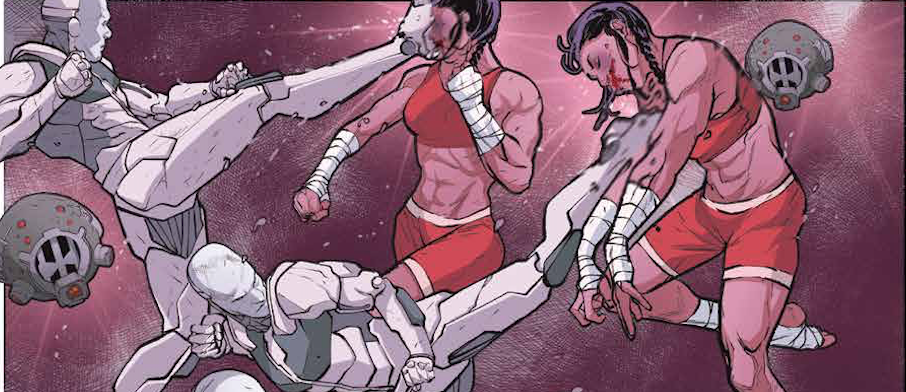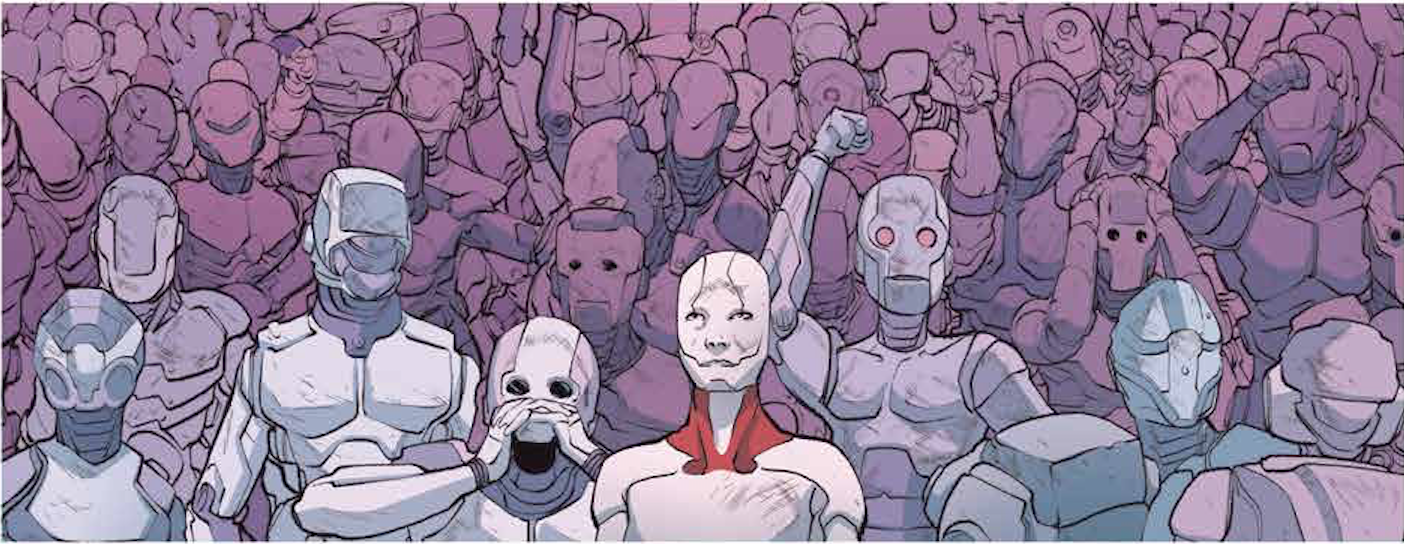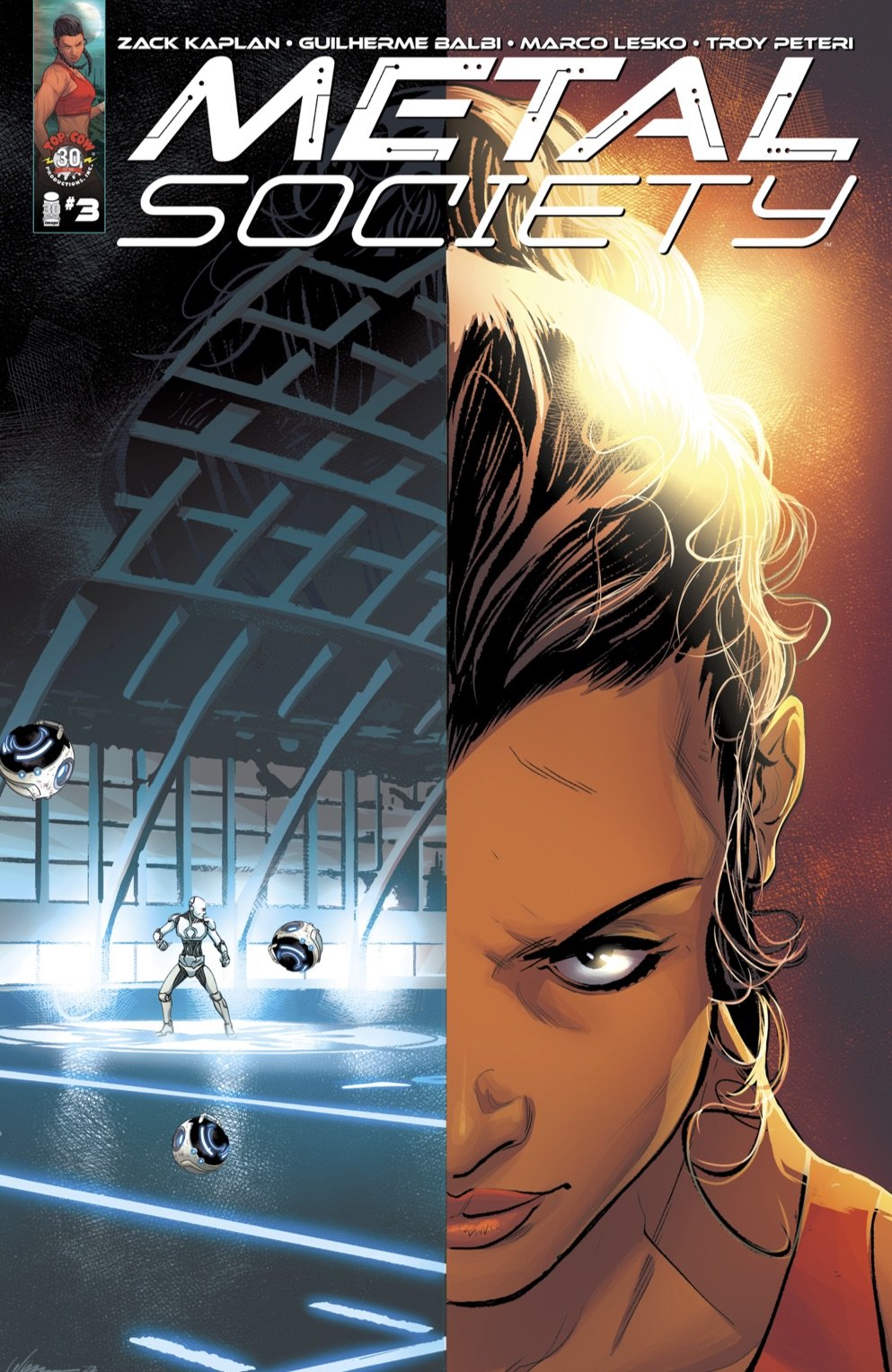Metal Society #5 // Review
A human and a robot are stepping into a ring. Each one fights for their own dignity and the dignity of their kind. Organic. Synthetic. Two enter. Only one will win. But maybe it doesn’t have to be that way as Metal Society reaches its fifth and final issue. Writer Zack Kaplan concludes a five-part series that is concise and balanced enough that it almost makes the four issues that preceded it completely unnecessary. Artist Guilherme Balbi and colorist Marco Lesko competently deliver the drama and action of a human-versus-machine fight. It’s the kind of mini-series closing issue that works really good as a complete one-shot story in and of itself.
In this corner: the human Rosa Genthree. And in this corner: the robot WOL-421313. They’ve both come into the ring to fight for their particular end of the world. The humans have been working for the machines as second-class citizens. They might gain a bit of respect if Rosa can win. It will potentially cost her a lot, though. She could theoretically die in the process of literally fighting for the rights of humans.
Kaplan opens right away with the first blows of Round One in the very first panel of the very last issue of the series. Though Kaplan DID deliver some basic information about how organic intelligence and artificial intelligence really aren’t all that different over the course of the series, and though various other elements of the background were delivered, the heart of the story rests in the final issue, and there really isn’t a need to read any previous chapters to understand and appreciate this one. Had Kaplan delivered a bit more depth in the four issues leading to the end, it might have felt a bit more like a full mini-series.
Balbi and Lesko are given an entire issue inside a big arena-style auditorium. There aren’t any flashbacks. There isn’t any vision of anything going on outside the arena. It’s all there. This could have ended up being substantially dull visually had it not been for the fact that Balbi has found a way to keep the action flowing from page to page fluidly and compellingly. Lesko’s colors are atmospheric enough to conjure the kind of SMELL that would have filled an auditorium populated equally by humans and metal robots. The visual world of the match is not pretty, but it is very vivid.
The more sophisticated end of a sci-fi story of this type could have been much more deftly brought to the page if Kaplan had rendered the world around the match in a bit more detail. There isn’t enough to differentiate between humans and robots in this particular world, and as a result, the thematic stakes of the match aren’t all that clear. The ending feels like a really natural outgrowth of the similarities between robots and humans, but it’s kind of difficult to tell quite exactly what it is that’s been resolved on a larger level once the reader’s eyes cross the final panel.










